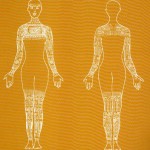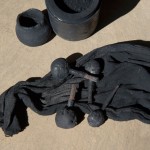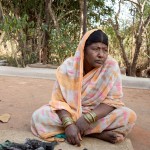Godna : Tattoo Art by women of the Baiga tribe Back
Women of the Baiga tribe of Madhya Pradesh are known for their art of tattooing or ‘Godna’. This practise has been an integral part of the Baiga culture for the women of the tribe. This art form instils a sense of pride among the women. The women feel incomplete without their godna.
The patterns drawn have remained unchanged over the centuries. They believe that these tattoo marks are the only things that are certain to go with them till the grave and beyond. The First tattoo is generally applied on the forehead of the girl at the age of nine or ten, without which a woman is not considered to be part of the Baiga tribe. More gets added on other parts of the body as the girl grows up. The last godna, called Chhati Godai, is done on the chest of the woman after she delivers a child.
The Badi (Gond) community people work as the tattoo artists and inherit this skill from their forefathers. The process takes place in the forests, as the men consider it to be an ill omen to see the blood of a woman while going out to work. The tattoos are inked using kajal which is powder obtained from crushing Ramtilla (Niger seeds). The initial patterns are drawn using small bamboo sticks, after which needles are used to etch these into the skin which allows the ink to permeate beneath the skin. The area is washed with lukewarm water and cow dung once the etching is complete. The skin takes around a week to heal and extracts from the Raijal herb are applied to help the healing process.
Once, every Baiga woman was adorned with godna, but today it is far less prevalent amongst the younger generation. Peer pressure, pain, teasing by other communities and a high price charged by the artists are the main reasons why the traditional skill is slowly fading and dying. The younger generation is unaware of the cultural loss that their community is facing. Mangla Bai Marawi, daughter of Shanti Devi – a well known tattoo artist from Lalpur village- has found an interesting way to revive the culture. She has started painting tattoo patterns on canvas, keeping the tradition alive in a new medium. This innovative style of preservation has also become a dependable source of income for her family, and has drawn attention to a defining characteristic of the Baiga.



















